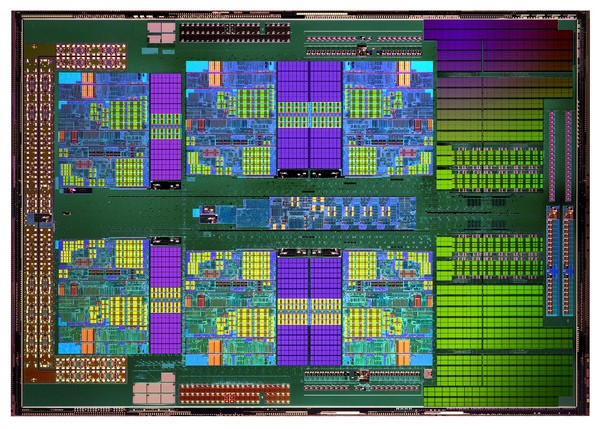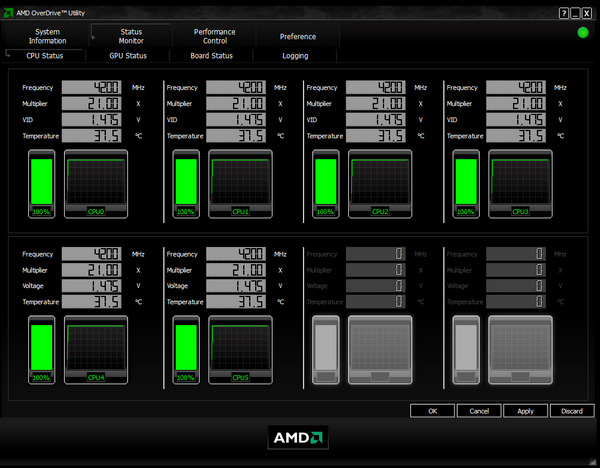About five years ago, we witnessed the rollout of the first dual-core processors. Those were much discussed in general, but the essence of argument was that the first dual-core CPUs had lower clock rates than their single-core counterparts. For this reason, they performed worse in applications where two cores were not used. And since the second core didn't come free of charge, some skeptics claimed it wasn't the time for multi-core products yet.
Now AMD is offering six CPU cores on a single die, promising that novelties are clearly better than existing solutions. They should be at least as fast as quad-core predecessors, where multithreading isn't needed. And proportionally faster in multithreaded applications. Besides, with the fastest model priced about $300, the new series promises to be quite affordable.
Initially, the series will feature two CPUs: AMD Phenom II X6 1090T 3.2GHz (MSRP $289) we shall review today and AMD Phenom II X6 1055T 2.8GHz (MSRP $199). The TDP of both doesn't exceed 125W. Designed for Socket AM3, the two are also backward-compatible with AM2+ and AM2. Though, this is a matter of timely BIOS upgrades provided by motherboard manufacturers. Aside from two additional cores, the novelties differ from the Phenom II X4 900 series products by supporting the Turbo CORE technology we shall describe below.

At first glance, AMD Turbo CORE looks like a counterpart of Intel Turbo Boost supported by Core i7 series. It also increases core clock rates in applications non-optimized for multicore CPUs (not using all of the cores). However, the management algorithms differ. Intel CPUs can have all four cores overclocked, the possibility of overclocking being determined by built-in sensor, measuring actual power consumption. In turn, AMD disables unused cores to overclock active ones. The default algorithm is: if less than 4 cores are loaded, three go to sleep (C1) and three active cores are overclocked. The overclocking limit depends on CPU model. That of 1090T is 3.6GHz, that of 1055T is 3.2GHz. It's up to BIOS to decide which of the two modes is right for the CPU. Besides, for this whole technology to work, Cool'n'Quiet and C1E options must be activated, because this technology implies similar adjustment of multipliers, just upward. By the way, this is also the recommended mode for testing such CPUs, which is convenient, because usually testers disable energy saving modes, trying to achieve maximum results. However, in real life, most users keep those options enabled. So now, test results should be even closer to real life.

Obviously, the technology using standard multiplier controls must be easily customized. This is provided by the new version of AMD OverDrive. You can set the maximum clock rate and the number of cores that will be active in the overclocked mode. For example, if your favorite applications only use two cores, it would be logical to choose an asymmetric mode in which four cores will sleep and two will be overclocked to, say, 4GHz.
Since we're talking overclocking, let's say a few words about our experiments. We didn't have time to check all the details, but we did easily achieve stable 4.2GHz across all six cores at regular voltage just by increasing the multiplier in BIOS. Impressive!
And there's another "administrative" peculiarity so to say. In new processors, memory controller clock rate (CPU NB) isn't fixed. Most likely, BIOS developers will tie it to memory modules clock rate (in the automatic mode). As for manual adjustments, it is recommended to select CPU NB frequency of 2200MHz for DDR3-1333 memory and the frequency of 2400MHz for DDR3-1600 memory. Note that both values are higher than the previously used 2000MHz.
Write a comment below. No registration needed!




